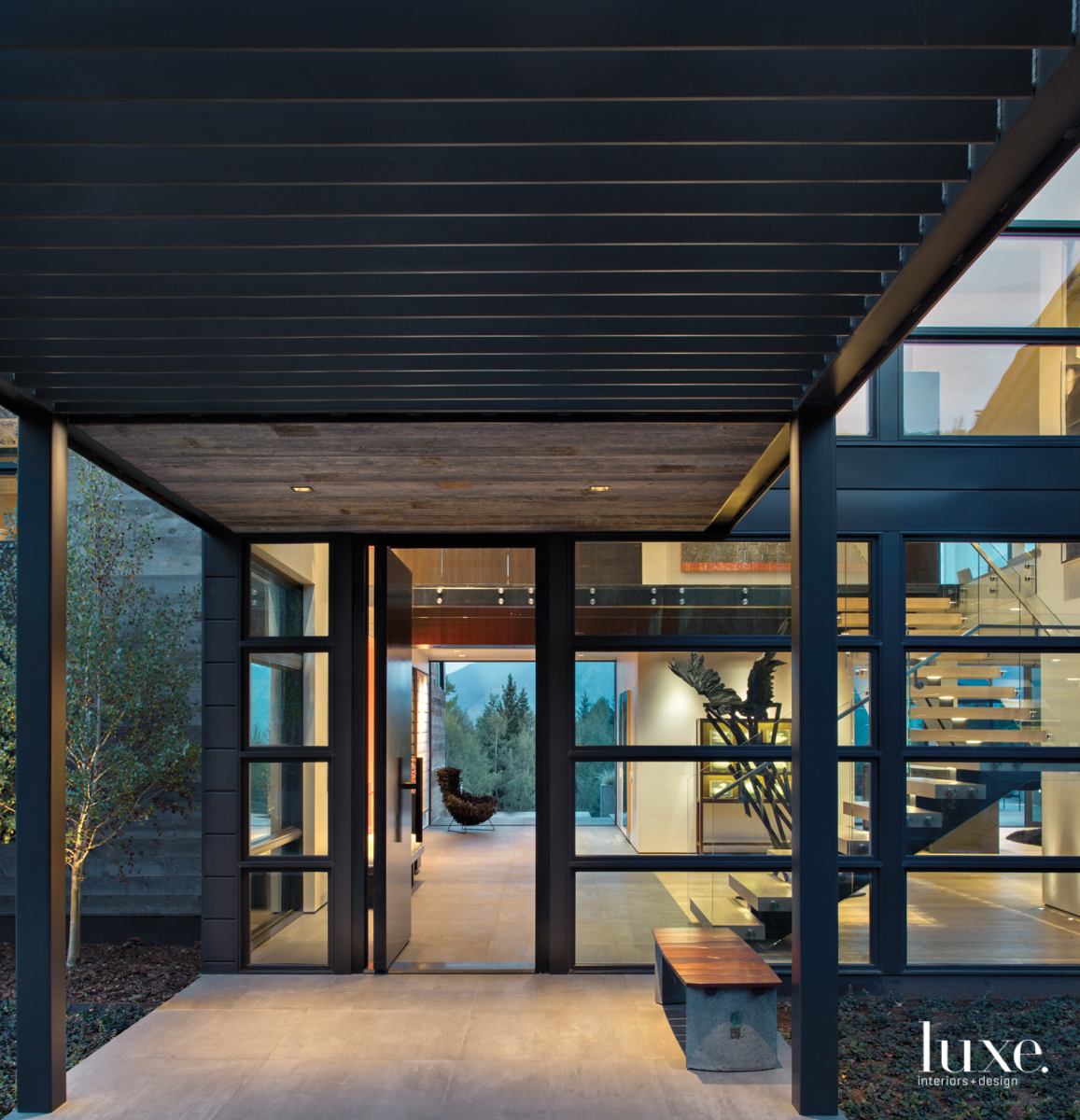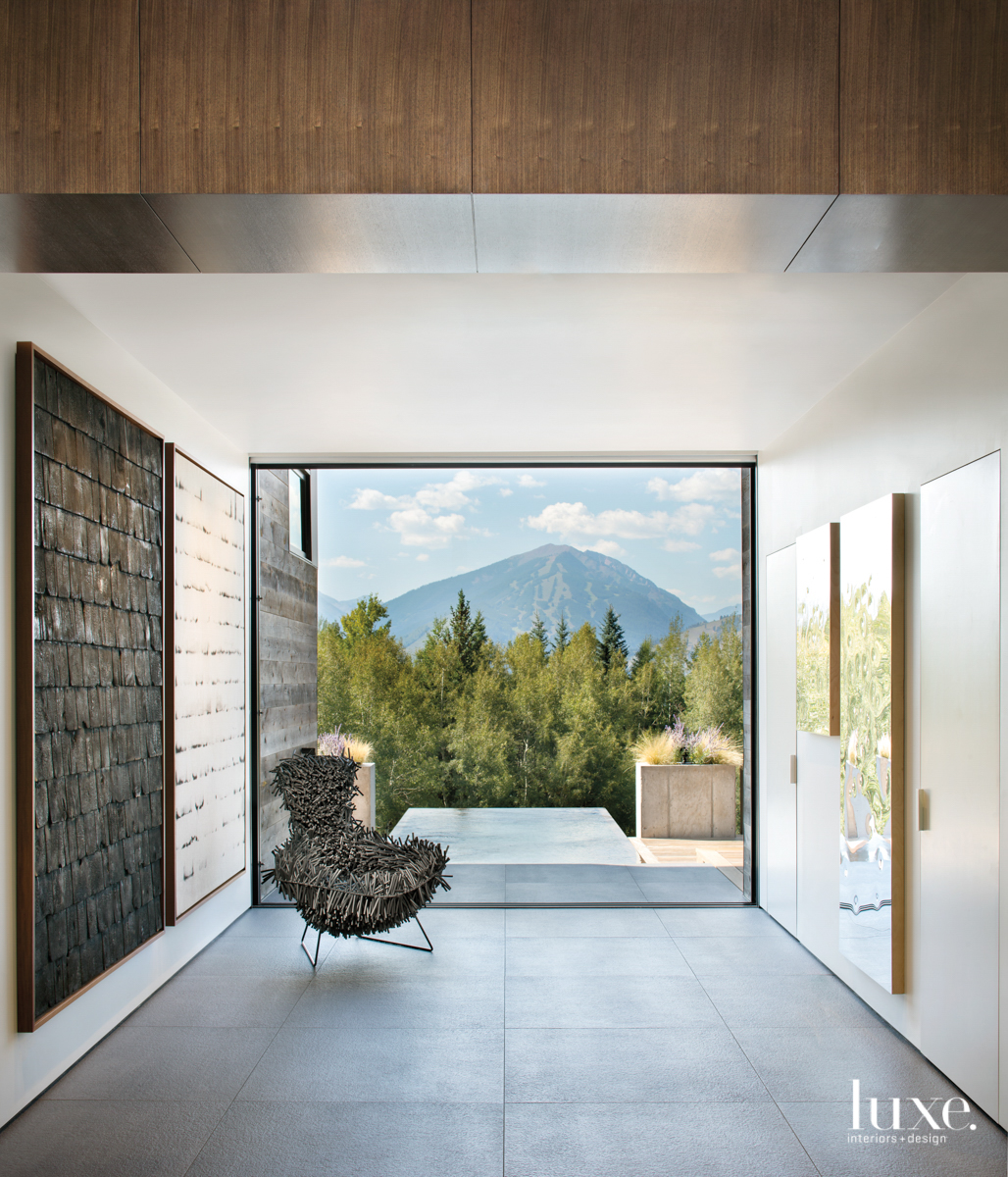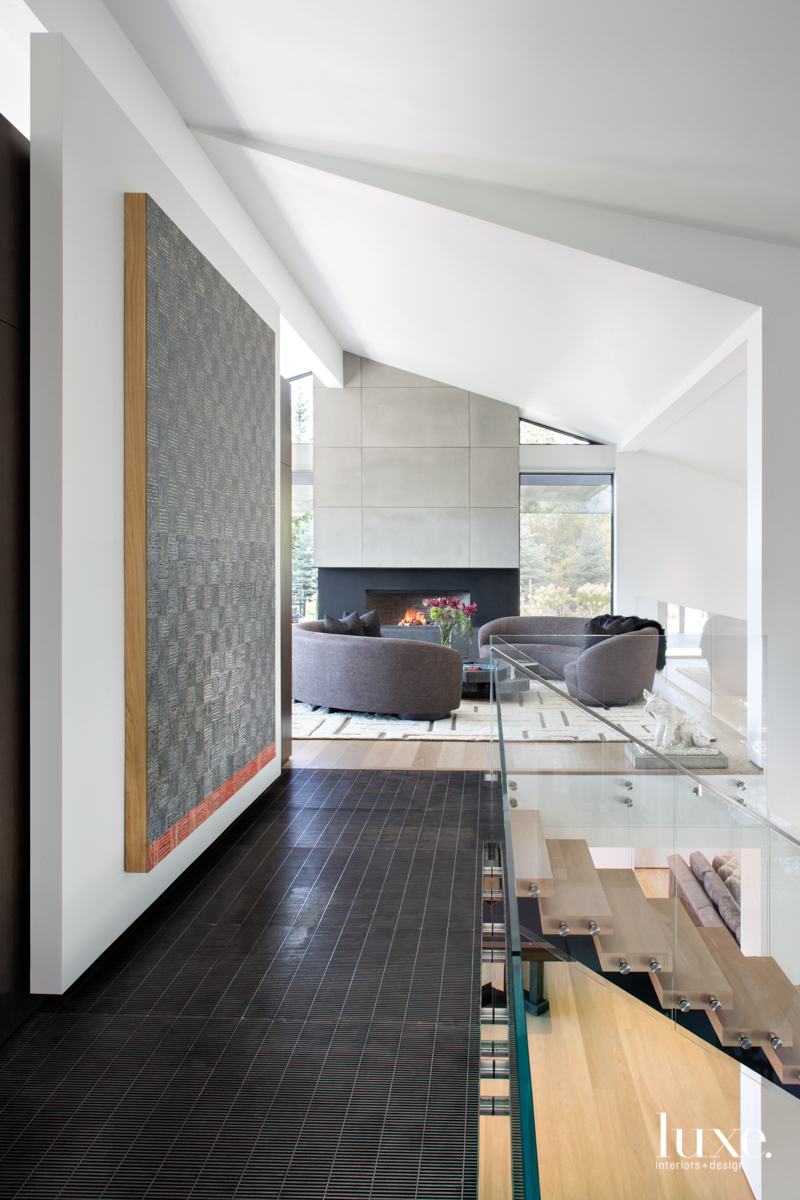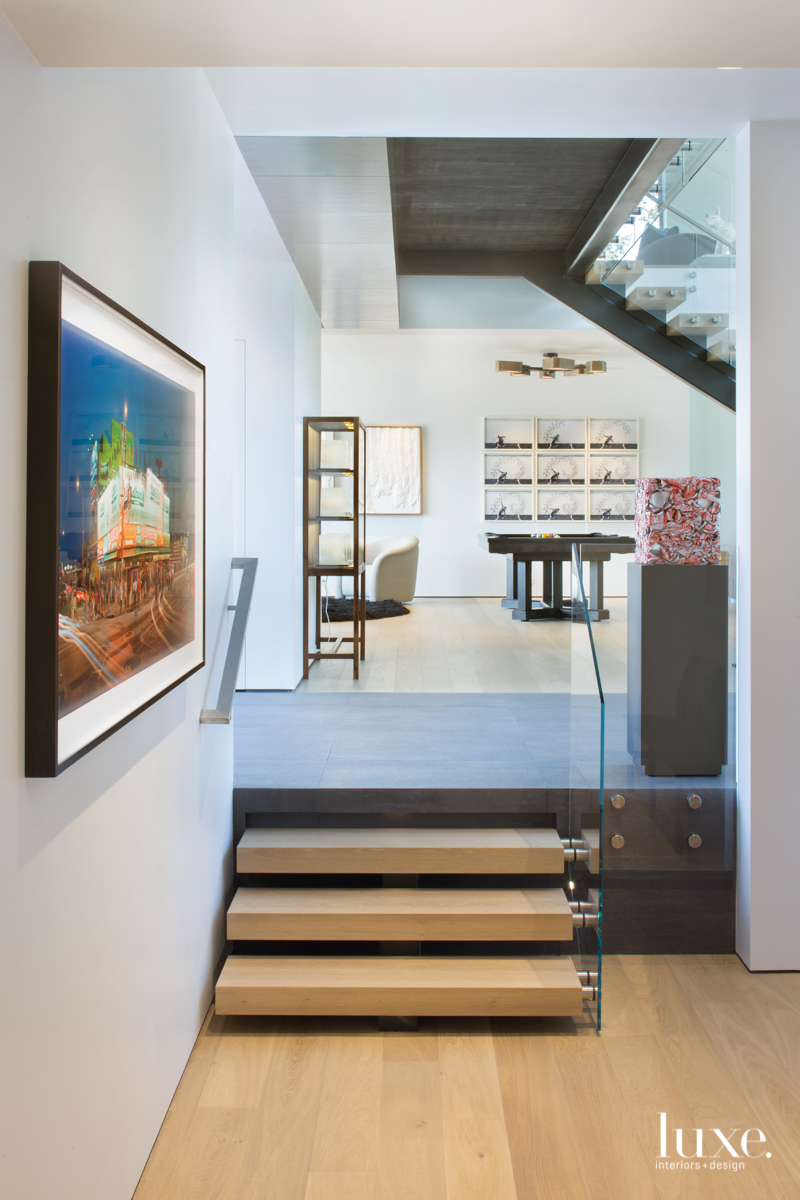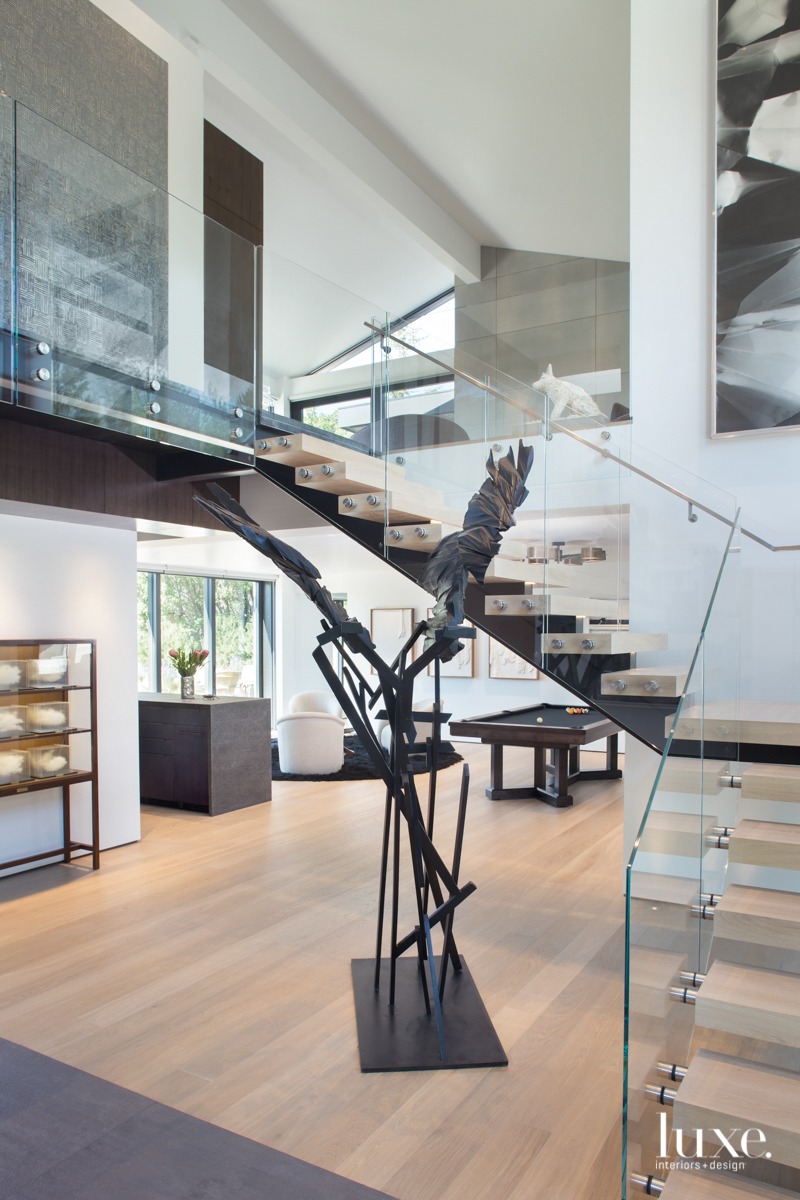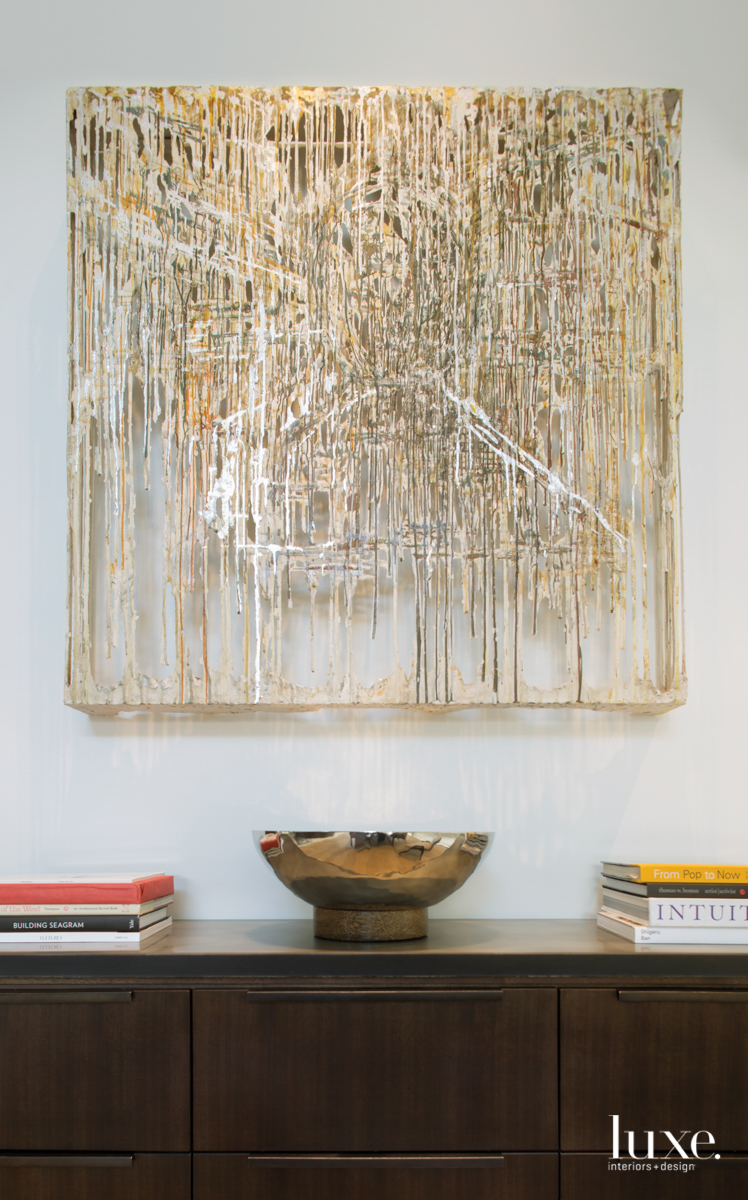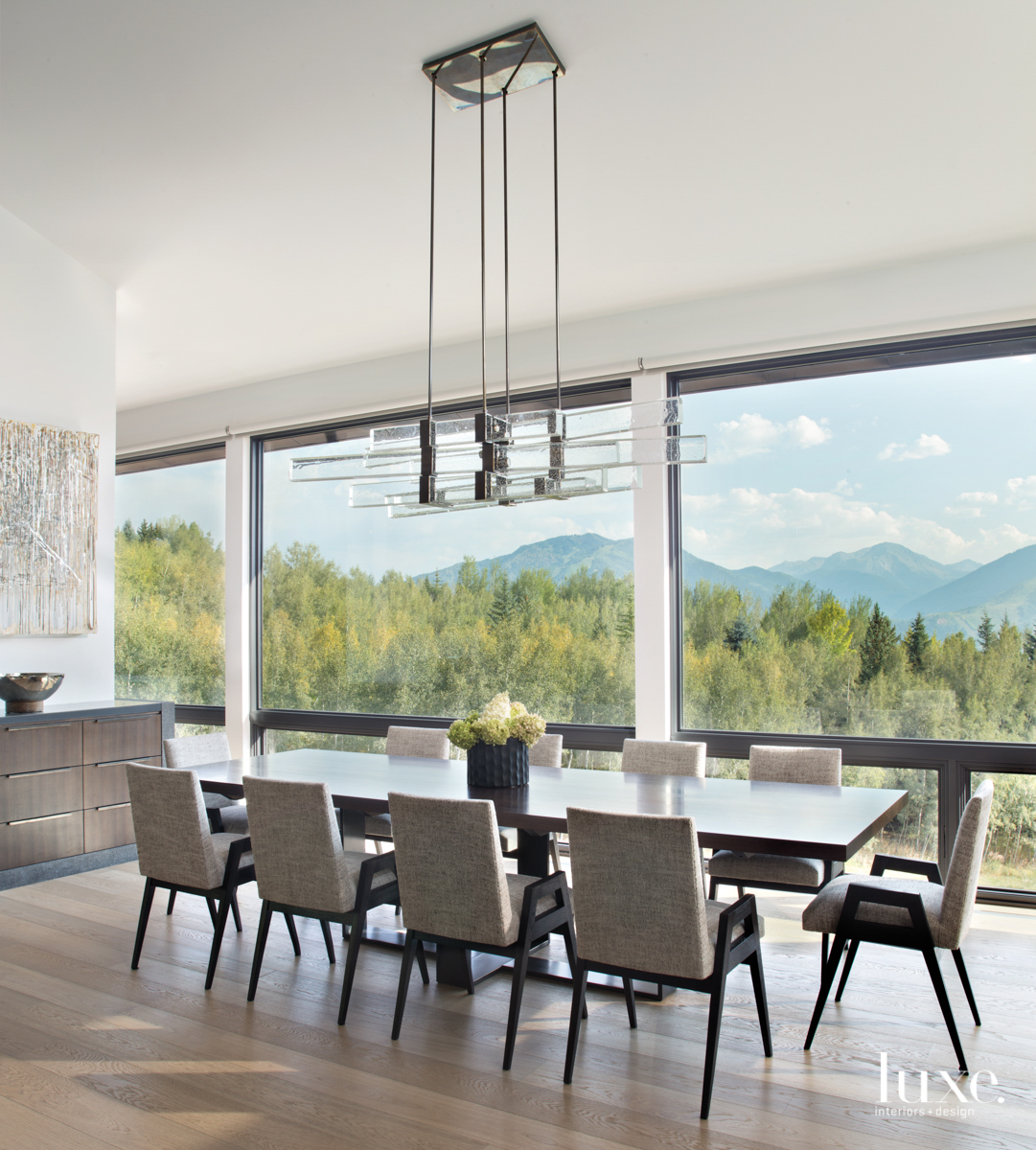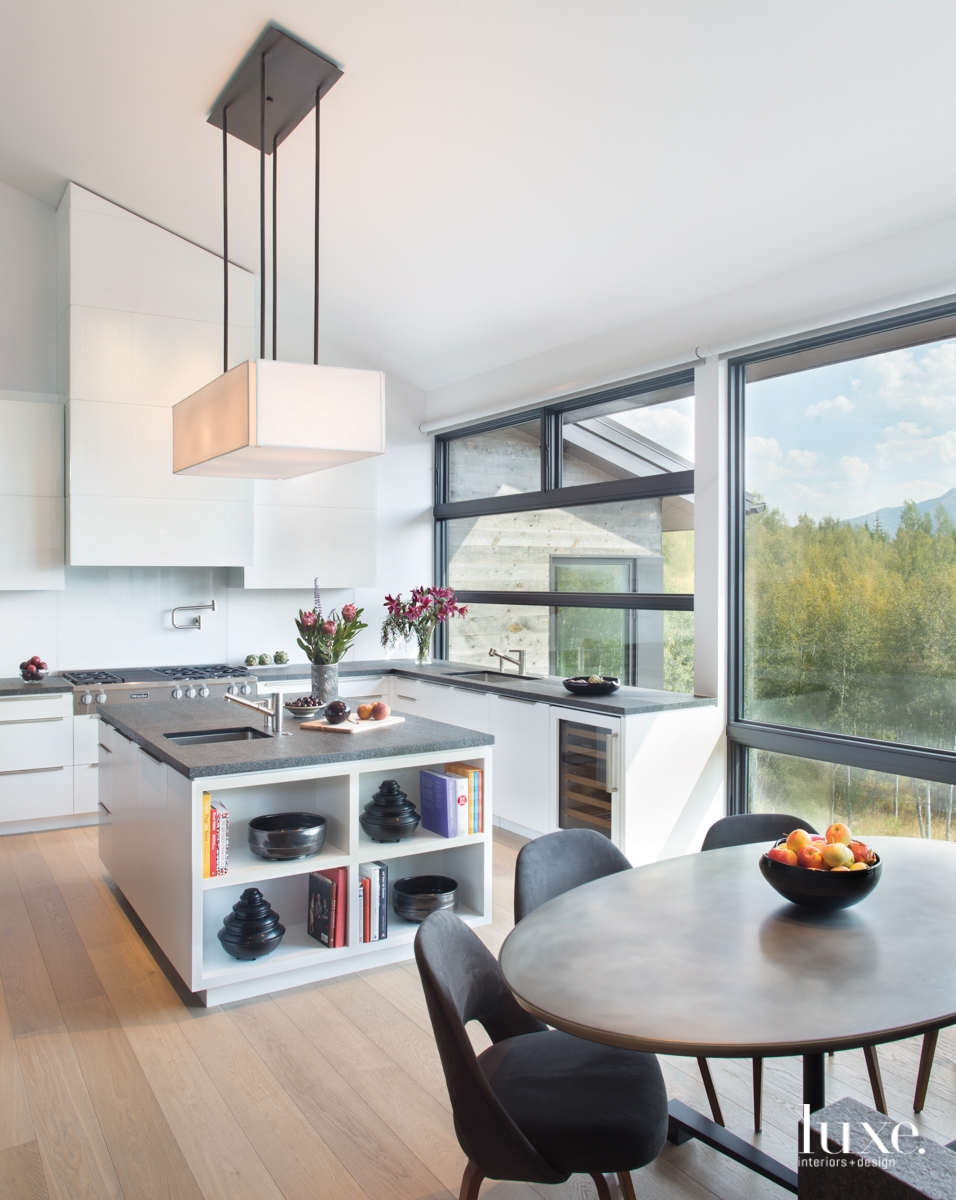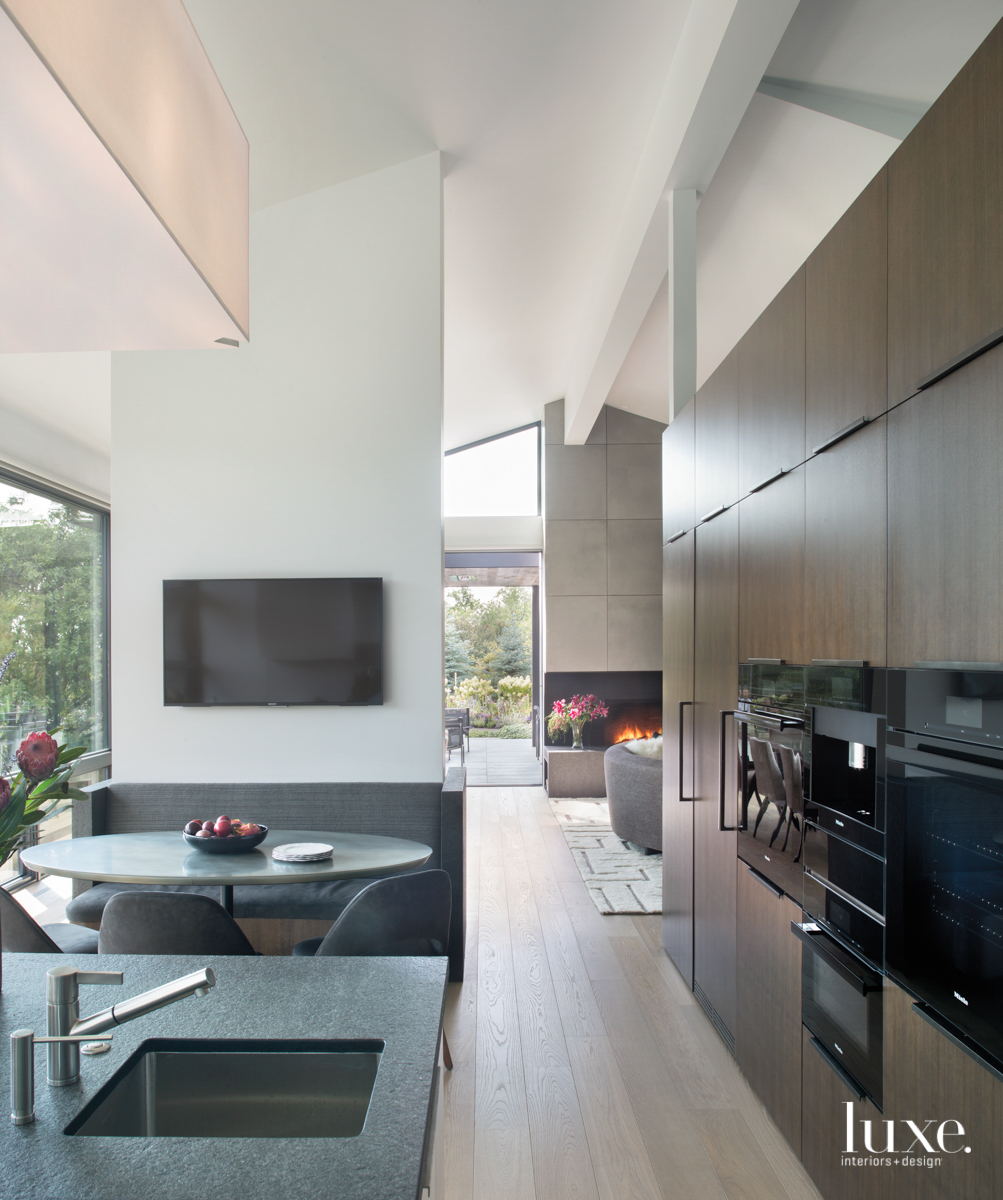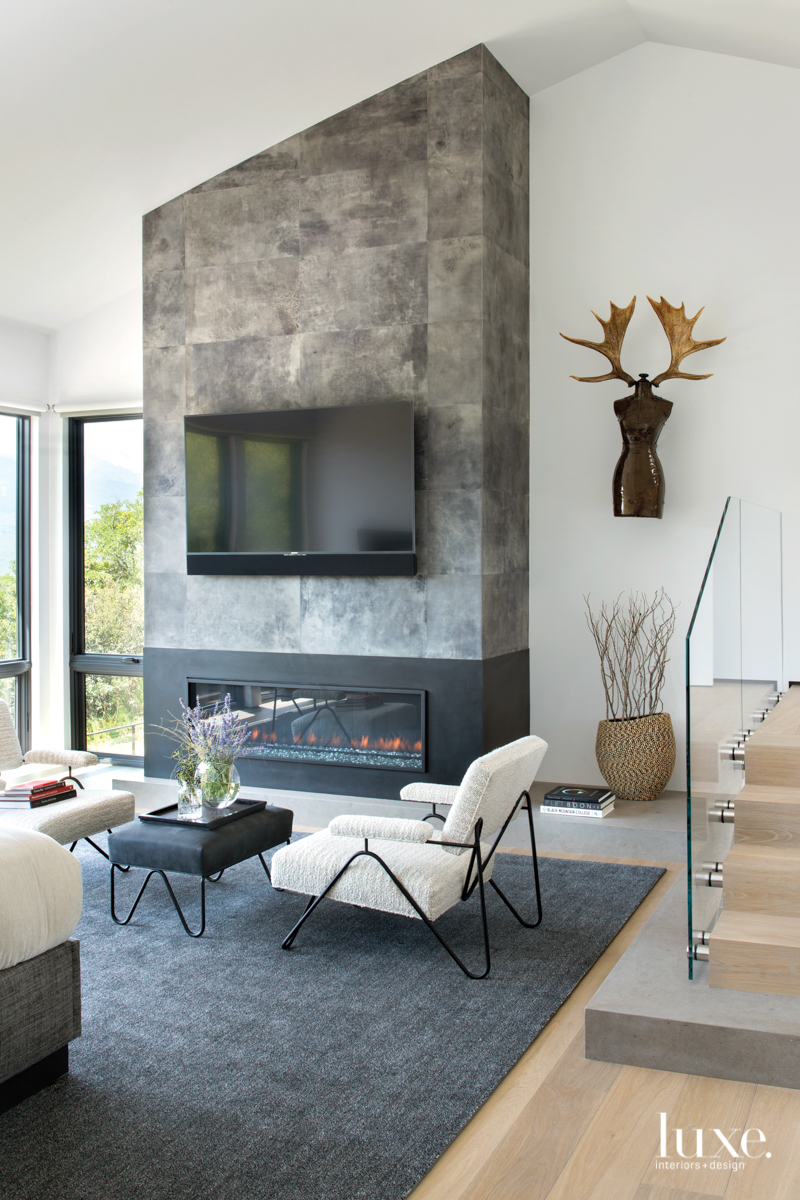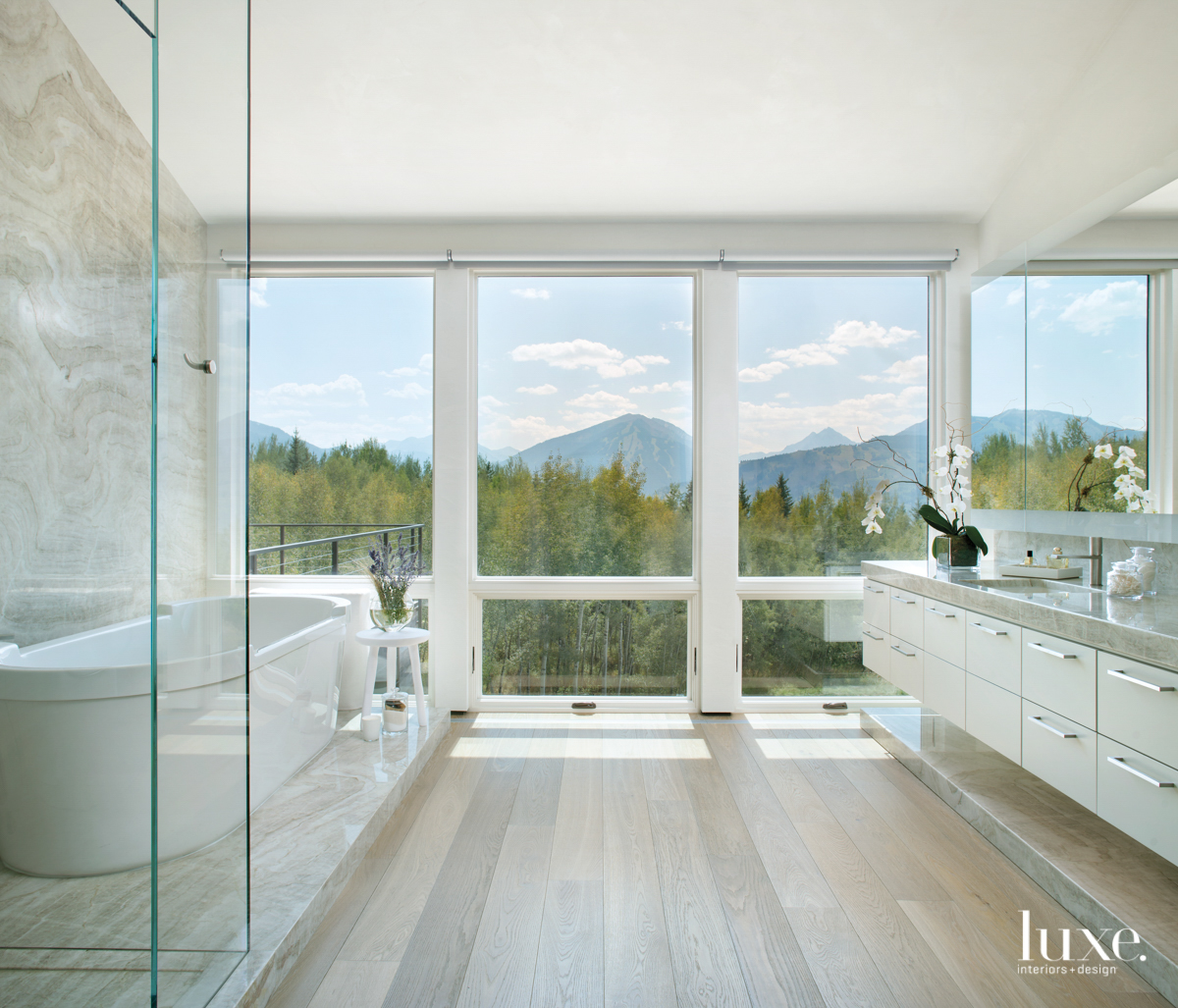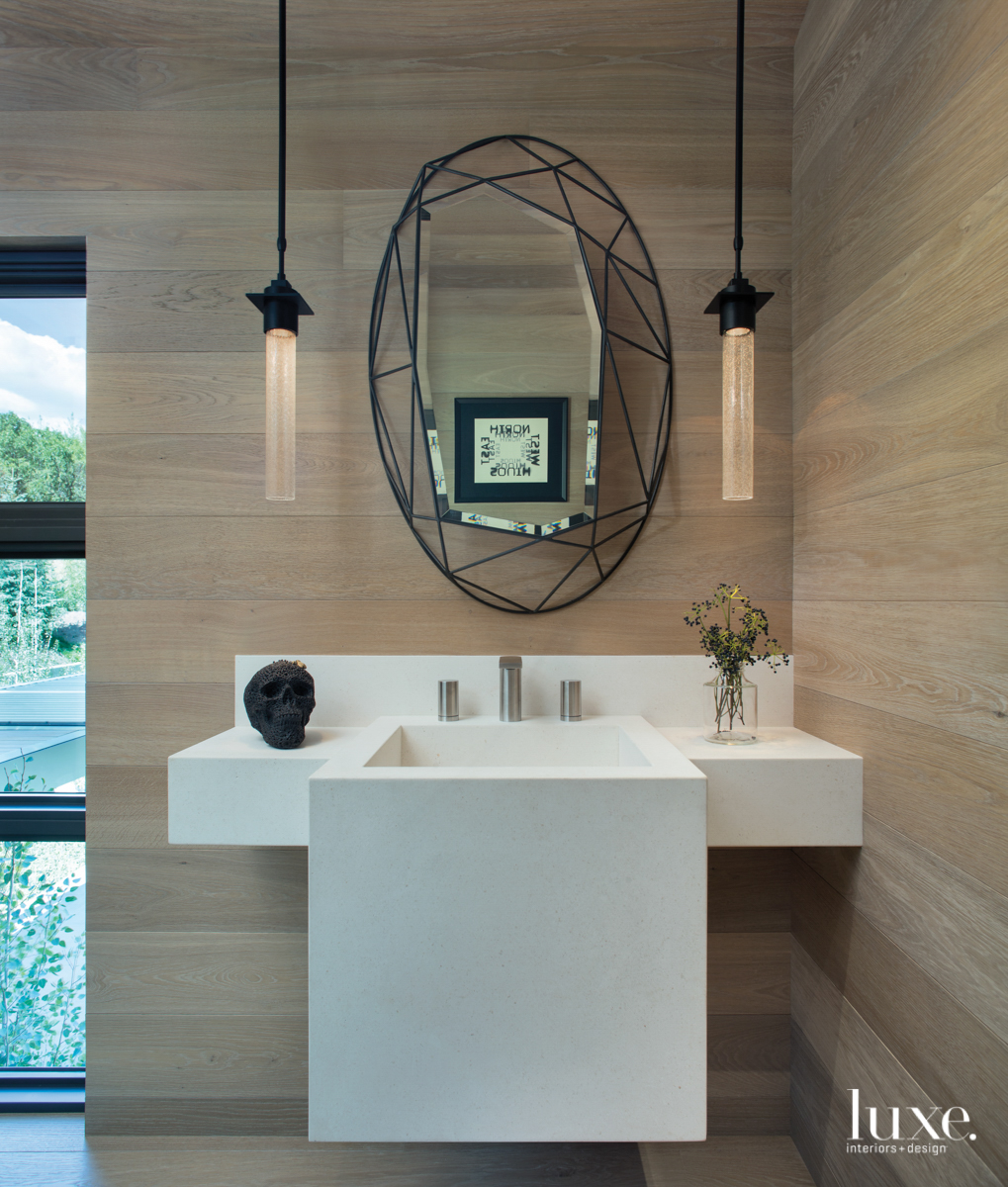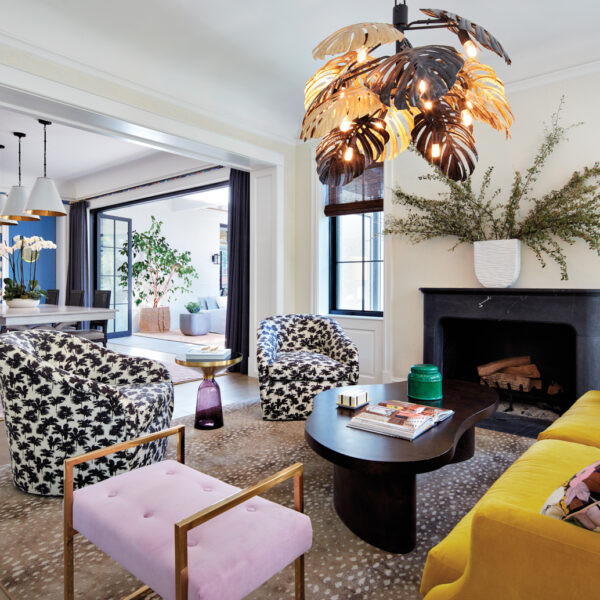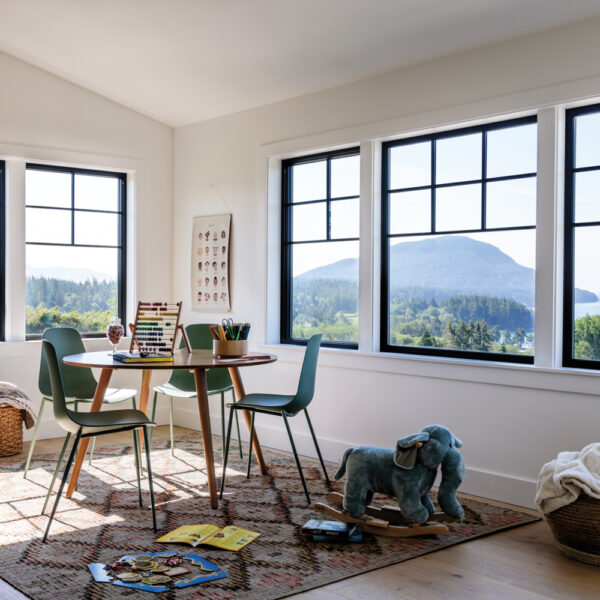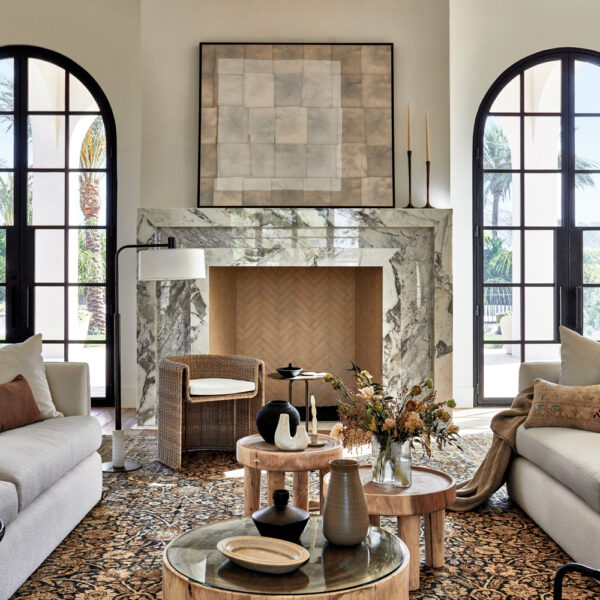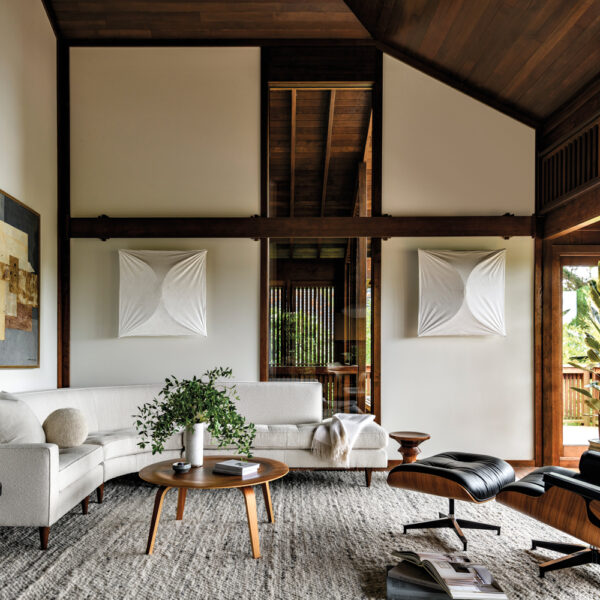Somewhere in the process of designing an modern Aspen home that engages with its steep topography while accommodating 60 major pieces of art, architect Sarah Broughton mused that organizing the disparate segments on such a large project was akin to a maestro conducting an orchestra. “Going through the various program elements is like dealing with a complex piece of music and it’s up to the architect to arrange it,” says Broughton, who welcomed the challenge. “Often people create modern architecture and it’s just one note. We wanted more depth.”
Purchased 11 years ago by a couple with three grown children, who split their time between Aspen and New York, the dated 1970s home in the Starwood community was originally slated for a remodel. “The striking views were unlike any property we looked at, but we bought it knowing we were going to renovate,” says the wife who, along with her husband, has ties to several art institutions and museums. But when the time came to start construction, the reports from builder Briston Peterson were not encouraging. “As we started deconstruction of the residence, we found structural issues. After careful analysis, we realized that the structure was substandard, and it made more sense to demolish a large portion of the old house rather than remodel it,” he says.
From the outset, the wife was an essential member of the design team–which also included designer Manuel de Santaren and landscape designer Arabella Thoyts-Beavers as well as Broughton and Peterson. “Living in the house gave me a certain aspect that no one else had–and I definitely had a vision of what I wanted,” she says. That vision began with siting the new entry. “The old house had walls that blocked the mountain views, but I knew what was behind them,” the wife remembers. “From the front door, I wanted to see right through the house to the Aspen Highlands.” The owner also curated the placement of every painting and sculpture, including situating a Wim Botha sculpture in the entry and having a special wall built for a McArthur Binion painting at the top of the stairs. Broughton designed her own brand of sculpture–spaces that possess a geometry that’s bold, but livable and relates to the commanding landscape seen through the large windows.
From the outside, the house is almost unassuming, with barn-wood siding that seems to help nestle the large structure into the surroundings and terraced garden beds that gently lead to the entry. Inside, just as the owner intended, the compelling mountain view draws the eye through to the back of the house where floor-to-ceiling glass doors open to an infinity edge copper pool.
In the main foyer, a wood-and-steel staircase with glass rails wraps the Botha sculpture before stretching to the next level and connecting with a mesh steel bridge carefully crafted to be sympathetic to high heels. “There’s a nice balance between the double height stair and the lower ceiling below,” says Broughton. “I always have to convince clients that bigger is not necessarily better when it comes to ceiling elevations.”
The structure’s crisp geometry prompted the owner and Boston-based de Santaren to select furnishings that act as counterpoints to the architecture, including curved Vladimir Kagan sofas in the living room, a quartet of curved chairs and a round rug in the family room, and William Haines chairs with graceful bent-metal frames in the master suite. “I always think there should be visual tension in a space,” says the wife. “To accomplish that goal, you need pieces that surprise and break the geometry.”
Upholstered pieces sport natural fibers like wool and linen in neutral tones that don’t detract from the beauty of the surroundings or the artwork. “Overall we decided that the house needed to convey a sense of textural warmth and ease,” says de Santaren. “The lack of pattern is intentional, we wanted to give the art room to breathe and be the centerpiece of the visual language.”
Throughout the house, the architect took the lead on material selection, which plays out in a variety of shapes and patterns that underscore the fact that this is anything but one-note architecture. The same concrete used on the exterior, for example, repeats in the monumental living room fireplace surround, but here it’s scored into large rectangles. The same gray color and form of the concrete is found in the master bedroom’s fireplace but expressed with leather squares. Also, in the master suite, a raised limestone plinth starts at the base of the steps and continues under the fireplace. A similar feature occurs in the adjoining bath, but this time as a raised marble platform under the sink. “It’s important to have continuity of theme and vocabulary but changes in materials,” says Broughton.
The intricacies are not lost on the grateful homeowners. “Everyone who worked on this house was part of team that put in 200 percent and there isn’t one person we don’t appreciate for their contribution,” says the wife. “It was a tremendously fun house to create.”

